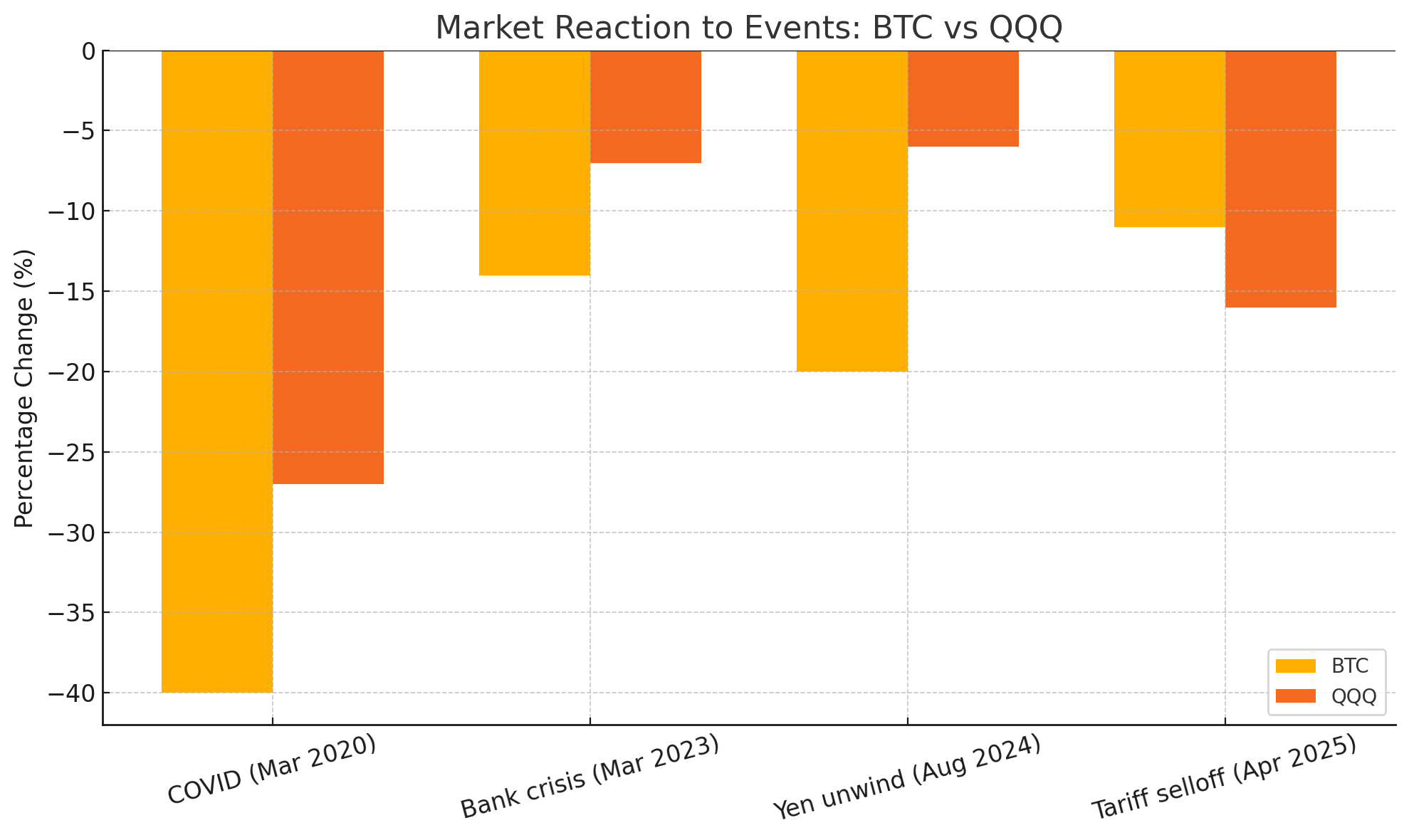
Key Points:
- Gold has appreciated by 90% over five years; however, over 40% of the USD’s total supply was created in 2020 alone, indicating that its value gains are barely keeping pace with the rate of monetary debasement.
- Bitcoin, despite its short-term price fluctuations, has demonstrated long-term stability, yielding a staggering 1,000% increase since the COVID-19 market downturn.
The concept of ‘safe haven’ assets, once dominated by gold and government bonds, is currently under rigorous scrutiny. Traditionally, investment strategies allocated 60% to equities and 40% to bonds, allowing for a flight to gold or government bonds during market downturns. Yet, with the rise of consistent market operations, geopolitical instability, and skepticism towards government institutions, the traditional definition of a safe haven is being challenged.
A New Entrant: Bitcoin
Bitcoin has gained notoriety as a volatile yet resilient asset, questioning whether it deserves to be classified among safe havens. As investors reconsider their concepts of value preservation, bitcoin’s performance since the lows following the COVID-19 crash has raised its profile.
Bitcoin surged over 1,000% since the crash in March 2020, while traditional long-term bonds plummeted by 50% from their 2020 peaks. Though gold remains a conventional safe haven, its price surge looks less significant against the backdrop of extensive monetary expansion in recent years.
Market Performance Overview
Bitcoin’s perceived reliability is under continual assessment, and during notable risk-averse periods, its behavior has mirrored that of high-risk assets. Here are some performance metrics from significant market events:
- COVID-19 (March 2020): BTC down 40% vs QQQ’s 27%
- Bank turmoil (March 2023): BTC down 14%, QQQ down 7%
- Yen carry trade unwind (August 2024): BTC down 20%, QQQ down 6%
- Tariff-induced decline (April 2025): BTC down 11%, QQQ down 16%
Although these instances portray bitcoin as susceptible to market risks, the most recent tariff-induced market drop exhibited pronounced resilience, with bitcoin falling less than the Nasdaq index, revealing an unexpected strength amid broader market unpredictability.
Investor Insights
“Non-sovereign assets like bitcoin are well-positioned,” stated NYDIG Research, urging that neutral financial assets should not be affected by global fluctuations. Despite its volatility, bitcoin is increasingly recognized for its liquidity, decentralization, and immunity to tariffs and central bank interventions. In an era marked by geopolitical tensions and financial restrictions, these characteristics render bitcoin a viable option for investors seeking long-term value.
Overall, as conventional safe havens face criticism, the discussion shifts towards whether bitcoin can be accepted as a new standard in risk management and asset protection. If the old benchmarks emphasize stability during financial turmoil, then bitcoin might not entirely fit that mold. Nonetheless, given the current financial environment dominated by sovereign risks, inflation, and unpredictable policies, bitcoin could emerge as a compelling choice for durability and neutrality.


